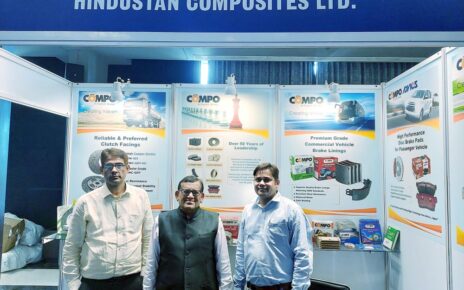Automotive Component Manufacturers Association of India (ACMA), the apex body representing India’s Auto Component manufacturing industry has announced the findings of its Industry Performance Review for the first half of fiscal 2024-25. The turnover of the automotive component industry stood at Rs.3.32 lakh crore (USD 39.6 billion) for the period April to September 2024, registering a growth of 11.3 per cent over the first-half of the previous year.

Commenting on the performance of the auto component industry in India, Vinnie Mehta, Director General, ACMA said, “With vehicle sales and exports displaying steady performance, the auto component industry demonstrated a growth of 11.3 percent scaling a turnover of Rs. 3.32 lakh crore (USD 39.6 billion) in the first-half of FY 2024-25. Auto Component supplies to all segments of the industry i.e., to OEMs, Exports as also the aftermarket remained steadfast. Exports grew by 7 percent to USD 11.1 billion (Rs.93.34 lakh crore) while imports grew by 4 percent to USD 11 billion (Rs.92.05 lakh crore) with USD 150 million in surplus. The Aftermarket, estimated at Rs. 47,416 crore also witnessed a growth of 5 percent. Component supplies to OEMs in the domestic market grew by 11.2 percent to Rs.2.83 lakh crore”.
Sharing insights on the performance of the auto component industry, Shradha Suri Marwah, President, ACMA & CMD, Subros said, “With vehicle sales across all segments reaching pre-pandemic levels and despite geopolitical challenges on the exports front, the auto components sector witnessed a steady growth in both domestic and the international markets in the first-half of FY2024-25.”

Elaborating on the mood of the industry and outlook for the near to mid-term future, Shradha mentioned, “The festive season brought significant sales across most segments of the vehicle industry. However, reflecting on the past eight months of this fiscal year, while two-wheelers have shown promising growth, sales of passenger vehicles (PVs) and commercial vehicles (CVs) has been relatively moderate. On exports front, with geological challenges, delivery time and freight costs have once again gone up. That said, in value terms, the industry remains in robust health, signaling stability and resilience amidst evolving market dynamics. The components industry continues to make investments for purposes of higher value-addition, technology upgradation and localisation to stay relevant to both domestic and international customers.”
Key findings of the ACMA Industry Performance Review for H1 2024-25:
- Sales to OEMs: Auto Component supplies to OEMs, in the domestic market, at Rs. 2.83 lakh crores (USD 33.8 billion) grew 11.2 percent compared to the first-half of the previous year. Consumption of increased value-added components and shift in market preference towards larger and more-powerful vehicles continued to contribute to the increased turnover of the auto-components sector.


- Exports: Exports of auto components grew by 7 percent to USD 11.1 billion (Rs.93,342 crore) in H1 2024-25 from USD 10.4 billion (Rs 85,870 crore) in H1 2023-24. North America accounting for 31 percent of exports saw an increase of 8.3 percent; while Europe also accounted for 31 percent however exports stayed at the previous year’s level. Asia accounting for 22 percent witnessed 10 percent growth.


- Imports: Imports of auto components grew by 4 percent from USD 10.6 billion (Rs.87,425 crore) in H1 2023-24 to USD 11.0 billion (Rs.92,050 crore) in H1 2024-25. Asia accounted for 65 percent of imports followed by Europe and North America, with 27 percent and 7 percent respectively. Imports from Asia grew by 5.5 percent, from Europe by 3.2 percent however they declined by 8.3% from North America.

- Aftermarket: The aftermarket in H1 2024-25 witnessed a growth of 5 per cent to Rs 47,416 crore (USD 5.7 billion) from Rs 45,158 crore (USD 5.5 billion) in H1 2023-24. With increase in e-commerce, the aftermarket is witnessing enhanced penetration especially in the hinterland and a gradual evolution into organised sector.




